
views
Reporting a Profile With the "Report" Link

Visit the profile you want to report. Each profile page on Facebook has a button that you can use to report the page directly to Facebook. Navigate to the profile you want to report.
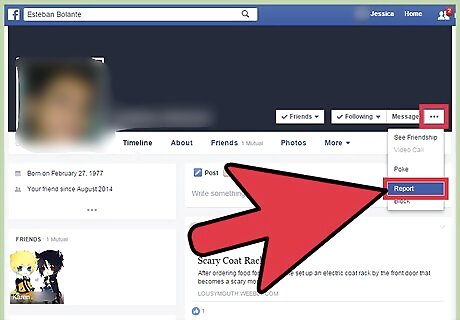
Find the "Report" button. Look for the profile's "cover photo," which is the large image at the top of the page. Set into the bottom right side of the cover photo, you should see several buttons, including an ellipsis ("...") button. Click the button to show a drop-down menu. On that menu, you will find the "Report" button. Click it.
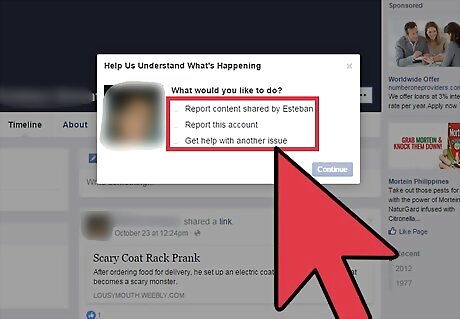
Use the menu to explain the issue. Clicking the "Report" button produces a pop-up menu that you can use to report the issue to Facebook. Answer each question by filling in the bubble next to the answer that best describes the situation. There are different answer options for reporting a profile that is impersonating you, someone you know, or a celebrity.
Reporting an Imposter Account Without Your Own Account

Visit the Help Center. Facebook has a Help Center webpage, which contains tips and advice on how to use Facebook and learn about its many features. It also contains instructions for reporting fraud and abuse. Visit the Help Center at https://www.facebook.com/help/.
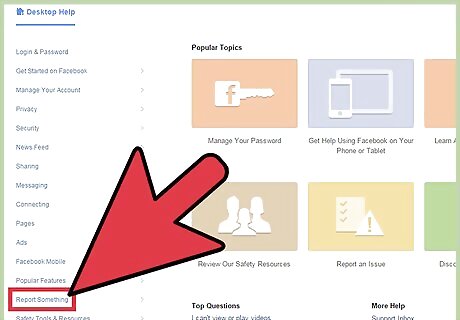
Click the "Report Something" button. On the left side of the screen, you will see a menu under the heading "Desktop Help." One of the options below is "Report Something." Click it. This will open a new menu.

Navigate to the "Report an Imposter Account" menu. From the menu on the left, select "Don't Have an Account?" This opens new options on the right side under the heading "Don't Have an Account?" Click on "How do I report a fake account that's pretending to be me if I don't have a Facebook account?" This will reveal a new sentence. Click the blue "file a report" link to open the "Report an Imposter Account" menu.
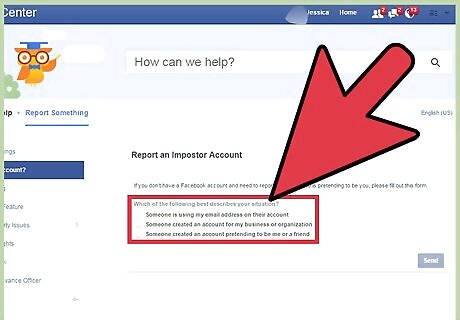
Answer the questions. Answer each question by filling in the bubble next to the answer that best describes your situation. You will also need to type in information, including your name and the email address linked to your Facebook account.
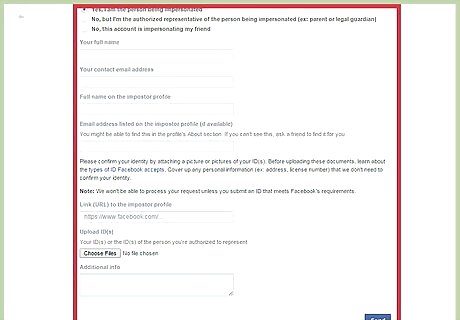
Submit identification. In order to verify your identity, Facebook needs to review some form of identification. When you upload your ID, the connection will be encrypted, and Facebook will delete your information once they finish verifying your identity. You must submit a government-issued ID that has your name and either your date of birth or a photo. Scan or take a clear photograph of your ID and upload the image by clicking the "Choose Files" button. If you do not have a government-issued ID that meets these criteria, you can submit two non-governmental forms of identification. For a list of acceptable forms of identification, visit https://www.facebook.com/help/159096464162185.
Accessing a Hacked Account

Visit Facebook's Help Center. If an unauthorized user has logged into your Facebook account and locked you out by changing the password, you can report this abuse and recover your account. Facebook has a Help Center webpage, which contains tips and advice on how to use Facebook and learn about its many features. It also contains instructions for reporting fraud and abuse. Visit the Help Center at https://www.facebook.com/help/.
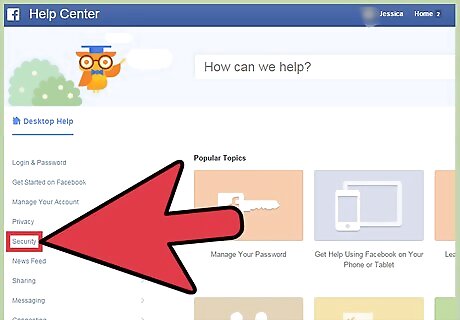
Click the "Security" button. On the left side of the screen, you will see a menu under the heading "Desktop Help." One of the options below is "Security." Click it. This will open a new menu.
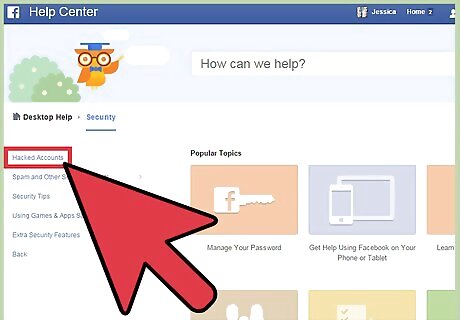
Click the "Hacked Accounts" button. On the left side of the screen, you will see a button for "Hacked Accounts." Click it to open new menu options.
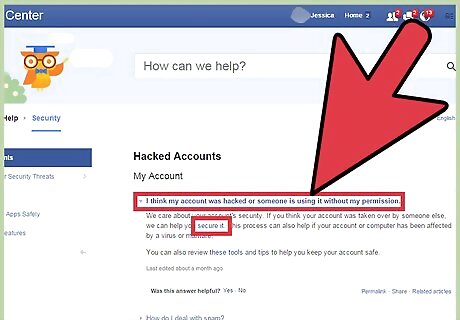
Secure your account. On the right side under the heading "Hacked Accounts," there is a link that reads "I think my account was hacked or someone is using it without my permission. Click the link to open more information, then click the blue "secure it" link at the end of the first sentence.
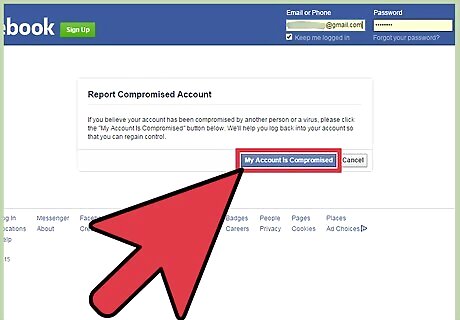
Use the menus to recover your account. A menu will appear to help you through Facebook's account recovery process. The menu will assist you in changing your password and logging back in to your account.
Reporting Identity Theft to the Police
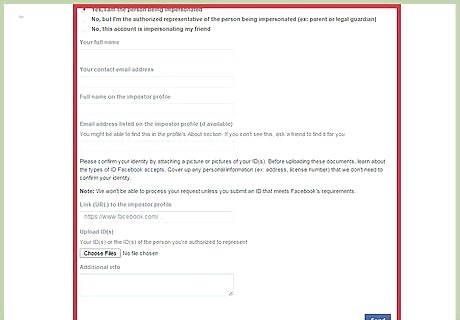
Contact Facebook. Before contacting the police, contact Facebook and let them know what is happening. Ask to speak to Facebook's fraud department so you can report the fraud. Ask Facebook to freeze your account until the fraud has been resolved. Be sure you reset any passwords and usernames that may have been compromised.
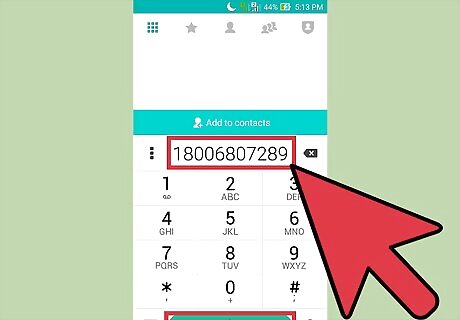
Inform credit bureaus and financial institutions. If you have any financial information on your Facebook account, including credit card numbers and bank account numbers, you will need to contact those entities to inform them of the breach. Call TransUnion at (800) 680-7289, Equifax at (800) 525-6285, or Experian at (888) 397-3742 and request a fraud alert on your credit report. This alerts the bureaus of possible identity theft and prevents anyone from opening new credit accounts in your name. This service is free of charge. Call your bank and make sure there is no unusual activity on your accounts. Also, change your online banking login information in case the identity theft gained access through Facebook.

Try to identify the culprit. Police are more likely to pursue your case if you can identify the person who has stolen your identity. Due to the high degree of anonymity on the internet, investigating identity theft is difficult. However, as several United States criminal cases have shown, perpetrators are sometimes prosecuted for identity theft. If someone is pretending to be you online and hurting your reputation, it is likely that the perpetrator is someone you know, rather than an anonymous scam artist. Police typically do not treat identity theft the same way they treat traditional crimes. This is because perpetrators of identity theft work through the internet and are usually located across jurisdictional boundaries from their victims. For this reason, police are unlikely to pursue your case if you cannot identify a perpetrator who lives in their jurisdiction.

Document the identity theft. Take screenshots of the fake profile and of any messages or comments you can find where the perpetrator has impersonated you. Document the web address and any photographs of you that the impersonator has uploaded to the profile. Carefully document any activity that can harm your reputation or career. For example, a woman prosecuted for posing as her ex-boyfriend online posted comments stating that he had a sexually-transmitted disease and used drugs. Also keep copies of any communications (emails, texts, or voicemails) from the perpetrator about the identity theft. If you have a message where the imposter admits to creating a fake profile, you can use it as evidence.

Contact the police. Call your local police department and explain the details of your situation. Understand that the police are unlikely to pursue the case unless you can tell them who the imposter is and demonstrate that you have been harmed by the identity theft. If the police are interested in pursuing your case, they will instruct you on how to provide additional information. When you contact the police, be sure you have already filled out an FTC Identity Theft Affidavit and have a copy of the FTC Memo to Law Enforcement. The Identity Theft Affidavit will give law enforcement information about your identity and in what ways you think it was compromised. The FTC Memo instructs law enforcement on how to handle identity theft cases in order to make sure you get the help you need.
















Comments
0 comment